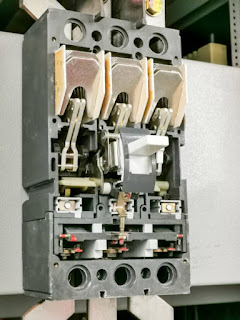Understanding MCCBs: How They Protect Your Circuitry
If you're an electrician or work in the electrical industry, you've likely heard of MCCBs, or molded case circuit breakers. These devices are designed to protect electrical circuits from damage caused by overcurrent, short circuit, and other fault conditions.
But what exactly is an MCCB, and how does it work? In this article, we'll delve into the details of MCCBs, explaining how they function and the various types available on the market.
What is an MCCB?
An MCCB, or molded case circuit breaker, is a type of electrical protection device that is used to interrupt the flow of current in an electrical circuit in the event of an overload or short circuit. MCCBs are commonly used in commercial and industrial settings to protect electrical circuits and prevent damage to electrical equipment.
MCCBs are typically housed in a molded case, which provides protection against impact, moisture, and other environmental factors. The case also helps to dissipate heat, which is important for the proper functioning of the MCCB.
How do MCCBs work?
MCCBs work by sensing when the current in an electrical circuit exceeds a predetermined level, known as the breaker's trip point. When this happens, the MCCB will open the circuit, interrupting the flow of current and protecting the electrical equipment from damage.
MCCBs use a variety of methods to detect an overcurrent or short circuit condition. One common method is the use of a thermal element, which expands as the temperature of the MCCB increases. If the temperature reaches a certain point, the thermal element will trip the MCCB, interrupting the flow of current.
Other MCCBs use electromechanical or electronic methods to detect fault conditions. These types of MCCBs may use sensors to detect an overcurrent or short circuit, or they may use software algorithms to analyze the current and determine if it is within acceptable limits.
Types of MCCBs
There are several different types of MCCBs available on the market, each designed for specific applications and environments. Some common types include:
- Thermal-magnetic MCCBs: These MCCBs use both a thermal element and a magnetic element to detect fault conditions. The thermal element responds to high temperatures caused by an overload, while the magnetic element responds to short circuits.
- Electromechanical MCCBs: These MCCBs use an electromechanical sensor to detect fault conditions. The sensor activates a trip mechanism, which interrupts the flow of current in the circuit.
- Electronic MCCBs: These MCCBs use electronic sensors and software algorithms to detect fault conditions. They are generally more accurate and faster-acting than other types of MCCBs, but they may be more expensive.
Why are MCCBs important?
MCCBs are an essential component of any electrical system, as they protect against damage caused by overcurrent, short circuit, and other fault conditions. Without MCCBs, electrical circuits and equipment could be damaged or destroyed, leading to costly repairs and downtime.
MCCBs also help to ensure the safety of personnel working in the electrical system. By interrupting the flow of current in the event of a fault condition, MCCBs can prevent electrical shocks and other hazards.
In summary, MCCBs are an important device for protecting electrical circuits and equipment, as well as ensuring the safety of personnel. If you work in the electrical industry, it's important to understand how MCCBs function and the different types available on the market.



.jpeg)


.jpeg)





0 Comments
Join the conversation! Leave your thoughts below and lets make an impact together.